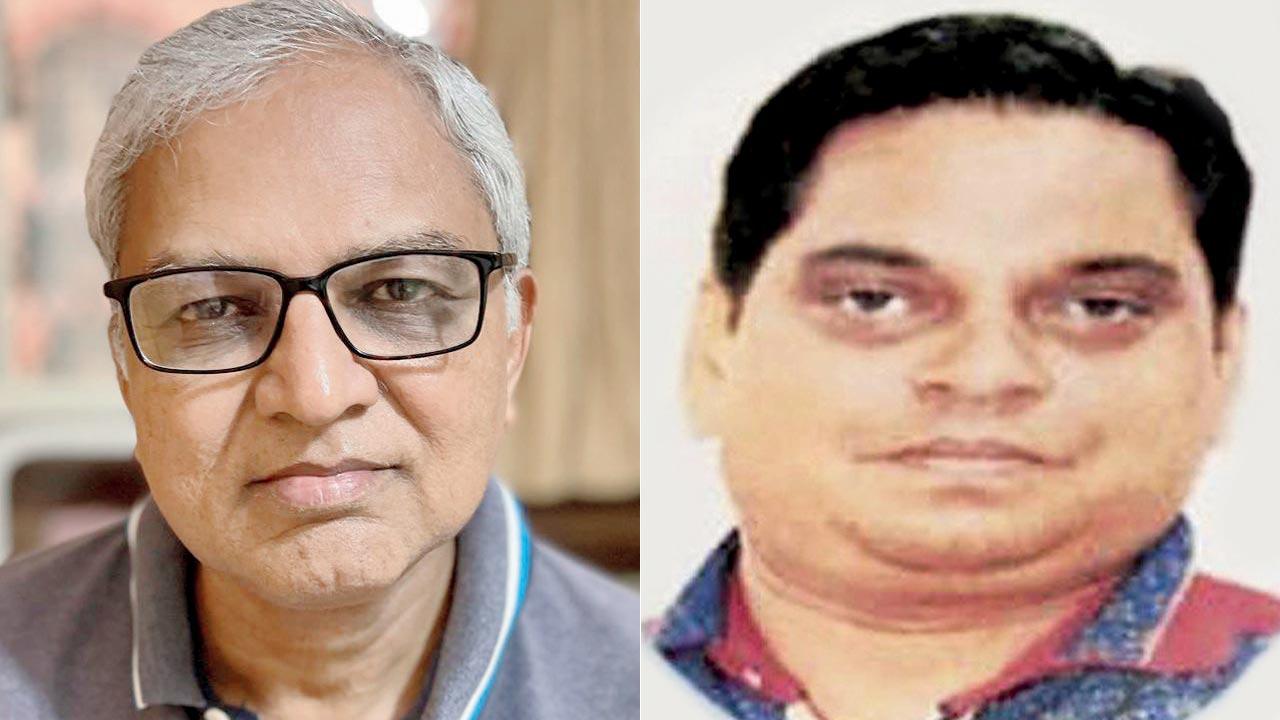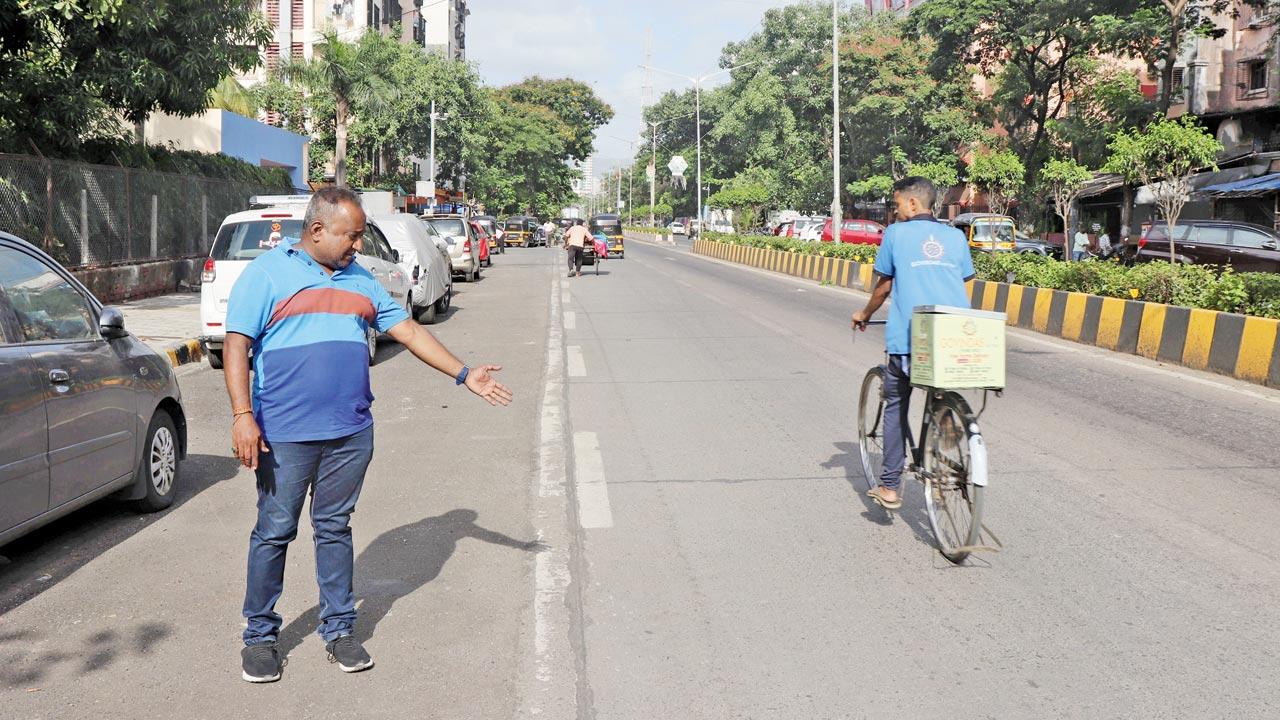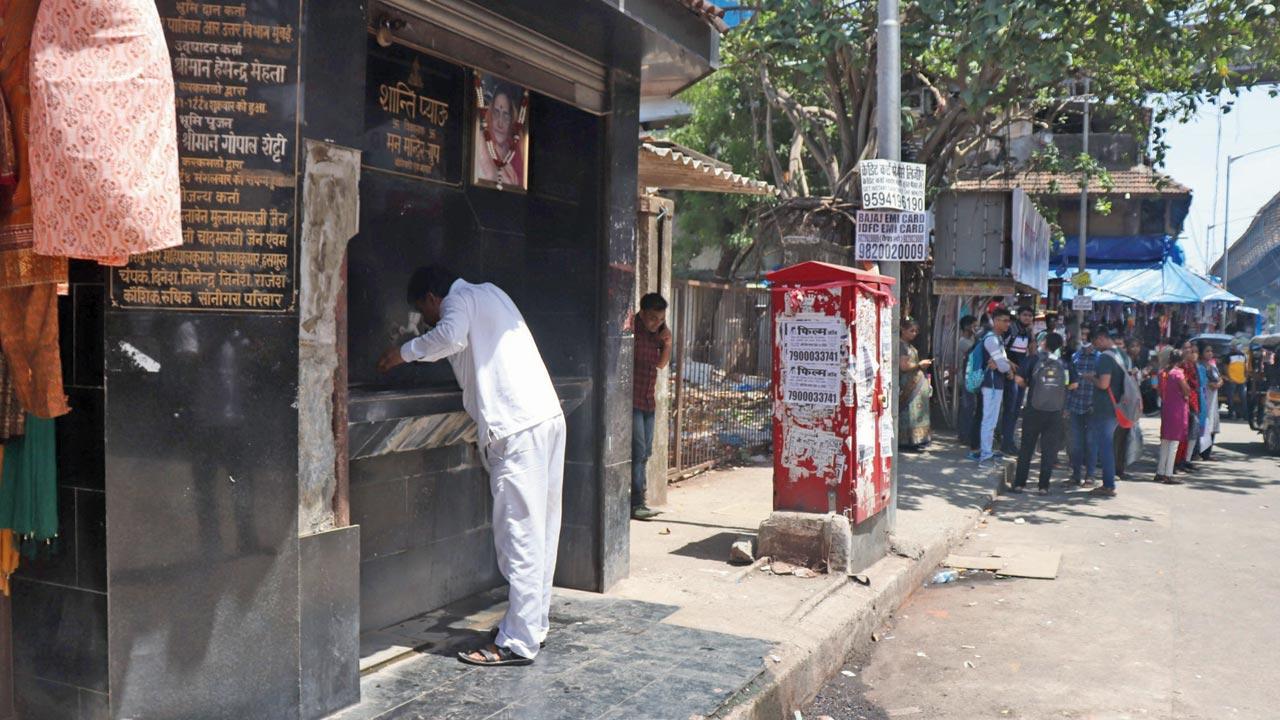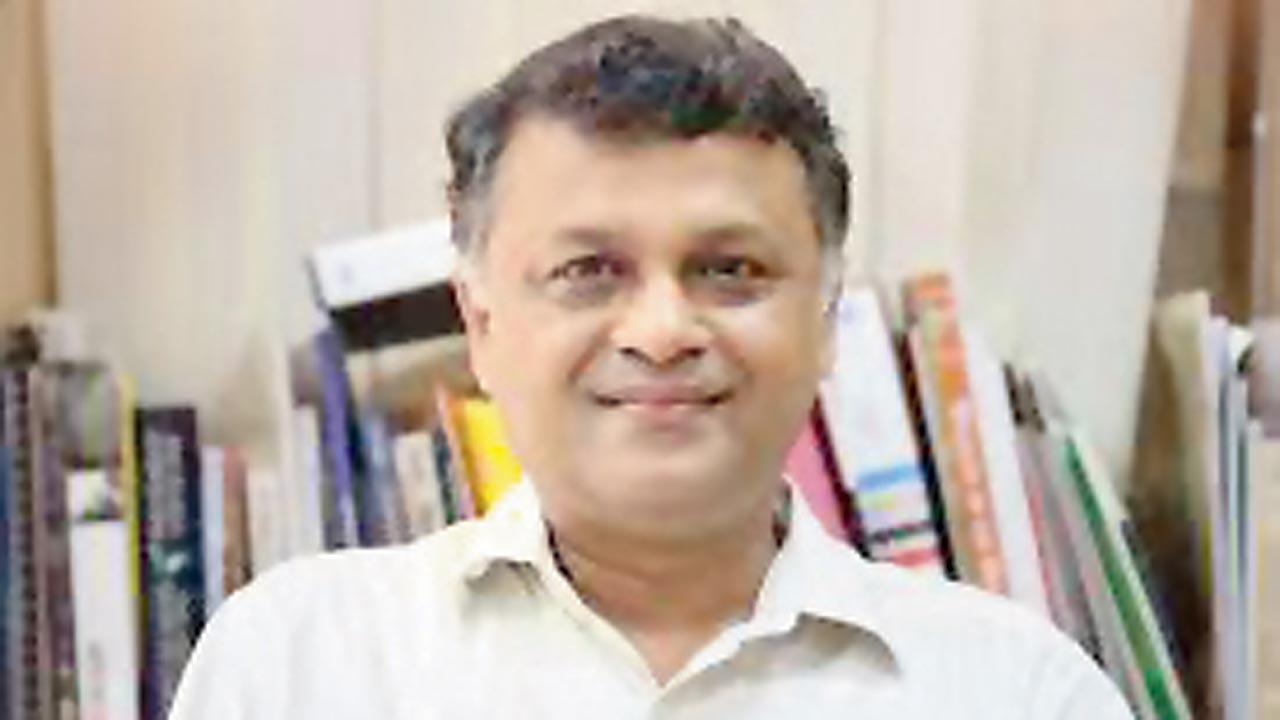Mumbai is India’s second deadliest city for walkers; so how did the BMC fail so miserably with its Pedestrian First Policy? A seven-part series detailing citizens’ woes

Hawkers block a footpath near Borivli station (W). Pic/Anurag Ahire
On December 21, 2021, a car rammed into Prashant Barekar on a Borivli road, killing him. In February last year, Bipin Dharod sustained multiple fractures after a car hit him in a lane in the same suburb. Both were on the road as there was no footpath space. Like Barekar and Dharod, countless Mumbaikars risk their lives daily as they don’t have access to pavements. In a seven-part series, mid-day explores the hurdles that come in the way of pedestrians in this metropolis.
ADVERTISEMENT
As per the latest statistics of the Union Ministry of Roads and Transport, Mumbai ranks second highest among Indian metro cities in pedestrian-related road accidents, next to Delhi.
Also read: Maharashtra: No roads in Palghar village put ailing residents at risk
 Bipin Dharod, who was hit by a car on a Borivli road in Feb 2021; (right) Prashant Barekar, who died after being hit by a car at Borivli on Dec 21, 2021
Bipin Dharod, who was hit by a car on a Borivli road in Feb 2021; (right) Prashant Barekar, who died after being hit by a car at Borivli on Dec 21, 2021
Kandivli resident Barekar, 45, worked as a head steward at Bay Viv Hotel in Gorai and was walking towards a bus stop on Gorai Road. He is survived by his wife, 13-year-old son and 8-year-old daughter. Dharod, 61, was trying to navigate a busy narrow road near Kulupwadi at Borivli West at the time of the mishap. It took him six months to recuperate. Jeevan Bhatia from Kandivli fractured his leg while walking on an uneven road. Later, his neighbour too got her foot fractured due to an unpaved road.
When walking is nightmare
Walking in Mumbai continues to be a nightmare whether it is from your office to the railway station, home to the market, to children’s school, or even a small distance trip to the nearest playground. The harrowing experience of pedestrians in the city points out only one thing—how the country’s richest civic body has failed to provide safe pedestrian infrastructure, despite framing an elaborate ‘Pedestrian First policy’. The city’s pavements feature every possible barrier for a walker imaginable: potted plants eating into the walking space, shops blocking pavements, bus stops, parked automobiles, and fractured paver blocks jutting out. Left with no option, people are compelled to stroll on the road, dodging irate, honking motorists.
“I blame Barekar’s death on the lack of adequate footpaths in the area. Barekar had no choice but to walk on the road. This is hardly the only instance. A senior citizen was hurt three months ago when a car hit him while he was walking toward the McDonald’s beside Don Bosco School in Borivli. Encroached, broken, and no footpaths make walking very difficult for not just senior citizens and the disabled, but also for ordinary walkers. Mumbai’s civic body has terribly failed in its efforts to develop and maintain footpaths in a majority of the suburbs. They do not exist, or if they do, they are badly maintained or encroached upon by hawkers or squatters even at bus stops,” said former corporator of Gorai Shiva Shetty.
 Shiva Shetty points to where Prashant Barekar was killed
Shiva Shetty points to where Prashant Barekar was killed
Dharod, who got multiple fractures, said, “Forget proper and clear footpaths, the road [where I met with an accident] is blocked by buses and vehicles parked all over, making it difficult to walk during peak hours. It is also tough for motorists to navigate through the road due to the crowd. I was hit by a car on my lower back. I was bedridden for two months and it took over six months for me fully recover.”
‘Uneven footpaths bigger risk’
Not just vehicles, uneven footpaths pose grave dangers to walkers. Narrating his ordeal, Kandivli resident Bhatia, who took to social media to highlight the problem, said, “I fractured my leg walking on an uneven road. No action was ever taken. Subsequently, my neighbour also fractured her foot due to the same problem. Pedestrians continue to suffer in this city.”
As per the latest data of the BMC, 65 to 70 per cent of the total 2,055 km road network in Mumbai have pedestrian walkways or footpaths, and the majority of them need urgent attention. Of these, about 1,950 km is maintained by the BMC itself.
 A drinking water kiosk has been built on a footpath at Borivli West. Pics/Anurag Ahire
A drinking water kiosk has been built on a footpath at Borivli West. Pics/Anurag Ahire
According to the Mumbai Road Safety Annual Report 2020, more than 1.35 million people are killed in road accidents worldwide each year, with low- and middle-income nations accounting for 93 per cent of these fatalities. India accounts for 11 per cent of the world’s road crash deaths. In 2019, India reported 1,51,113 deaths, with Maharashtra accounting for 12,788.
As per the 2020 report, pedestrians are the second most vulnerable road users in Mumbai, accounting for 42 per cent of all traffic fatalities.
The report says Mumbai stood second highest in the number of accidents involving pedestrians with 944 mishaps, the first being Delhi with 1,621 accidents. Of the deaths in Mumbai, there were 136 pedestrian deaths, while 897 pedestrians were grievously injured and 108 sustained minor injuries.
 Rishi Aggarwal, The Walking Project
Rishi Aggarwal, The Walking Project
Some efforts for walkers
In 2008, authorities tried to improve pedestrian access in the city. Building skywalks between stations and major thoroughfares was a joint effort by the state government as well as local entities. They selected Bandra and Santacruz stations for this purpose. However, the skywalks have been mostly underutilised due to a lack of exits, poor security, hawker invasion, and improper alignments. They are too tall for senior citizens and women to access.
Rishi Aggarwal, who founded The Walking Project in 2012 as an advocacy group for a safer, convenient and joyful walking experience on roads in Indian cities, said, “The plan then was to try to reach out to the BMC and other planning authorities and get them to work on giving Mumbai the best walking environment in the country. It’s been a decade since we started, however, the city still faces the same issues—non-walkable or no pedestrian-friendly roads. While millions are spent on roads, flyovers and bridges to accommodate the ever-increasing volumes of cars, no thought is spared for walkers.”
Aggarwal blames the state of affairs on the lack of consistency and planning by authorities. He said: “They [BMC and other planning agencies] keep introducing new projects every year with attractive names, however, all this still fails to resolve the core issue. The problem lies with the road department and the chief engineer who need to be sensitised towards pedestrian issues. Indian Road Congress too had come up with detailed guidelines on roads and pavements/footpaths, BMC has its own pedestrian first policy. Sadly, none of these guidelines has been implemented in Mumbai.”
Pedestrian First policy
The BMC had introduced a ‘Pedestrian First’ policy to make Mumbai’s footpaths free of encroachment, but it never really took off. The corporation had sanctioned Rs 100 crore for footpath repairs in 2019. Half of that money was eventually used to save the BEST. The pandemic and the drop in revenue forced the BMC to slash the budget for footpath repairs by 86 per cent in 2020, from R50 crore to a meagre R7 crore. Officials said the project received less attention largely due to COVID-19.
New plans raise hope
The recently launched Mumbai Climate Action Plan’s (MCAP) sustainable mobility outlook has highlighted that only 22 per cent of the city’s roads are pedestrian-friendly or is walkable.
MCAP has recommended that the city planning authorities draft a detailed Non-motorised Transport policy for Mumbai by 2035. It has also set a target for BMC, MMRDA and other bodies to implement pilot pedestrianisation projects in high footfall areas by 2025, fixing signs near pedestrian crossings, increase signal timings for walkers by 2030 to check fatality rates for pedestrians, and increase the length of pedestrian walkways in low-income areas. At present, most footpaths are encroached, obstructed by structures, or used to park two-wheelers.
“Despite challenging walking conditions that we observe in Mumbai over the past many years, the city still retains over 50 per cent pedestrian mode share. But this cannot be viewed as an achievement right now, instead as a number that we have to work hardest to retain and possibly increase. Imagine if these people move to motorised modes? And this is only possible with a conscious attempt to shift the focus from moving vehicles to moving people,” said Dhawal Ashar, head (integrated transport and road safety), with the non-profit WRI India.
42 per cent
City’s share of pedestrians in road fatalities
22
Percentage of city roads that are walker friendly as per MCAP study
 Subscribe today by clicking the link and stay updated with the latest news!" Click here!
Subscribe today by clicking the link and stay updated with the latest news!" Click here!







